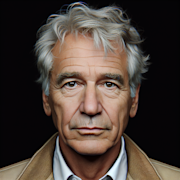The Good, the Bad and the Ugly (1966)

Released in 1966, “The Good, the Bad and the Ugly” is a classic Western film directed by Sergio Leone. The movie has stood the test of time and remains a beloved favorite among fans of the genre. In this blog post, we will explore the various aspects of this iconic film, from the performances of the actors to the direction of the film.
The Plot
Set during the American Civil War, the film follows three gunslingers - Blondie, Angel Eyes, and Tuco - as they search for a hidden cache of gold. Each man is motivated by their own desires, leading to a tense and suspenseful journey as they navigate the brutal landscape of the West.
The plot is filled with twists and turns, culminating in a climactic showdown between the three protagonists. The film is known for its intricate plot and well-developed characters, making it a standout in the Western genre.
The Performances
One of the standout aspects of “The Good, the Bad and the Ugly” is the performances of the lead actors. Clint Eastwood, as Blondie, delivers a stoic and mysterious performance that cements his status as a Western icon. Lee Van Cleef brings a menacing presence to the role of Angel Eyes, while Eli Wallach captures the cunning and unpredictable nature of Tuco.
The chemistry between the three actors is palpable, adding depth and complexity to their characters. Each actor brings their own unique style to the film, creating a dynamic and engaging on-screen presence.
The Direction
Sergio Leone’s direction in “The Good, the Bad and the Ugly” is nothing short of masterful. The film is filled with sweeping shots of the vast desert landscape, creating a sense of isolation and desolation. Leone’s use of close-ups and extreme long shots adds to the tension and drama of the film.
Leone’s signature style, known as “Spaghetti Western,” is on full display in this film. His use of music, specifically Ennio Morricone’s iconic score, enhances the mood and atmosphere of the film. The director’s attention to detail and visual storytelling make “The Good, the Bad and the Ugly” a cinematic masterpiece.
The Legacy
Over 50 years after its release, “The Good, the Bad and the Ugly” continues to be celebrated as one of the greatest Western films of all time. The film’s influence can be seen in countless other works, from Quentin Tarantino’s “Django Unchained” to the television series “Breaking Bad.”
The iconic showdown between Blondie, Angel Eyes, and Tuco remains one of the most memorable moments in film history. The film’s themes of greed, betrayal, and redemption resonate with audiences to this day, solidifying its place in the pantheon of great cinema.
Conclusion
In conclusion, “The Good, the Bad and the Ugly” is a timeless classic that has left an indelible mark on the Western genre. From its intricate plot to the standout performances of its lead actors, the film continues to captivate audiences with its gripping tale of greed and vengeance.
Sergio Leone’s masterful direction and Ennio Morricone’s haunting score elevate the film to legendary status, ensuring its place in the annals of cinema history. Whether you’re a fan of Westerns or simply appreciate great filmmaking, “The Good, the Bad and the Ugly” is a must-see for any movie lover.

Desmond van der Walt
Journalist
More From Classics Authority Movies

Movie
The Legacy of Katharine Hepburn: Classic Hollywoods Strong Woman

Movie
Spartacus (1960)

Movie
Classic Sci-Fi Movies: Exploring the Boundaries of Imagination

Movie
Silver Screen Debutantes: Classic Actresses Who Defined a Generation

Movie
Film Noir's Shadowy Aesthetics: The Art of Visual Storytelling

Movie
Alfred Hitchcocks Leading Ladies: Women Who Defined Classic Suspense





